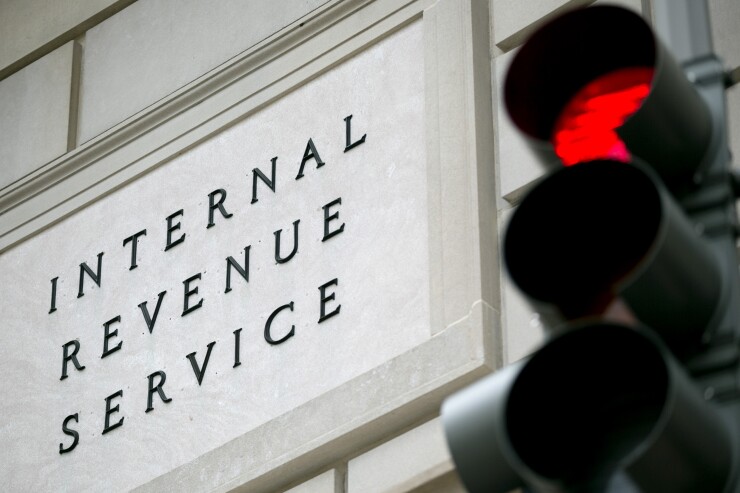The Internal Revenue Service has been conducting "sweeps" in recent years to uncover cases where high-income people have not been filing taxes, but the tracking data and training need to be improved, according to a new report.
The
Sweeps are a strategy employed by the IRS to either address an increase in its unassigned high-priority inventory of tax cases in an understaffed location or to support a compliance initiative, such as egregious employment tax cases and high-income nonfilers. The IRS expanded the use of sweeps between fiscal years 2019 and 2022.
Last year, former IRS Commissioner Danny Werfel
"When people don't file a tax return they're required to, it's not fair to those hardworking taxpayers who responsibly do their civic duty under the laws of our nation," he said during a press call last year. "When people don't file their taxes, they need to know there's a consequence. And this is why I was particularly troubled to learn when I became commissioner that the IRS had to back off our core compliance work on non-filers. Due to severe budget and staff limitations, the IRS non-filer program has only run sporadically since 2016. This program pullback didn't happen because of lack of information. The IRS knows who these non-filers are. The IRS has the third-party information, such as through Forms W-2 and 1099, indicating these people received significant income but failed to file a tax return. The IRS has known these people are out there, and they involved some very prosperous households."
Sweeps were conducted throughout the U.S. and internationally, the TIGTA report noted, but there were several geographic areas in the continental U.S. that have a high number of high-income nonfilers where limited or no sweeps were done. The report suggested opportunities for more sweeps in places like eastern New Mexico, western Texas, northwestern Nevada and Wyoming.
However, it's unclear whether the IRS will be prioritizing such sweeps in the future, given the layoffs underway at the agency. On Monday, TIGTA
There were other areas where the sweeps could be improved. The review found that missing, incomplete, and/or inaccurate data were found in data fields such as the taxpayer's name, address, revenue officer identifier and case assignment date. These errors were not identified and corrected before TIGTA's review.
TIGTA said it worked with the IRS to make corrections so the data reviewed for the audit were accurate and complete. However, it suggested the IRS would benefit from complete and accurate data to track the results of sweeps.
The IRS's Field Collection team is not always using sweeps to help train and develop employee skills, the report noted. And while the sweeps desk guide provides the IRS with many opportunities to develop employee skills, managers at the IRS's Collection unit are not always taking advantage of them. Those kinds of activities have the potential to make sweeps an even more effective tool.
TIGTA recommended that the IRS's Small Business/Self-Employed Division's director of Field Collection should continue to identify and perform sweeps of all types, including assessments of high-risk geographical areas as well as issue-based sweeps. The report also suggested the IRS should regularly review sweeps data to identify and correct errors and ensure it's accurate and complete before using it for management reporting. The IRS should also capture more information in the tracking spreadsheet so management can better assess the productivity of each sweep, the report recommended. That should include information such as which delinquent tax return modules were secured, whether any of the returns had tax assessments, and the results of specific collection initiatives. In addition, the IRS should remind all levels of management of the sweeps desk guide procedures and provide refresher training on their responsibilities in the sweeps process, the report recommended. IRS management agreed with all of TIGTA's recommendations.
"We appreciate the audit team's efforts to understand Field Collection employees' experiences with Sweeps through revenue officer and manager interviews," wrote Lia Colbert, commissioner of the IRS's Small Business/Self-Employed division, in response to the report. "Their experiences and feedback conveyed the positive impact of Sweeps, and the importance of raising awareness of tax laws and compliance for many taxpayers in communities across the country."






